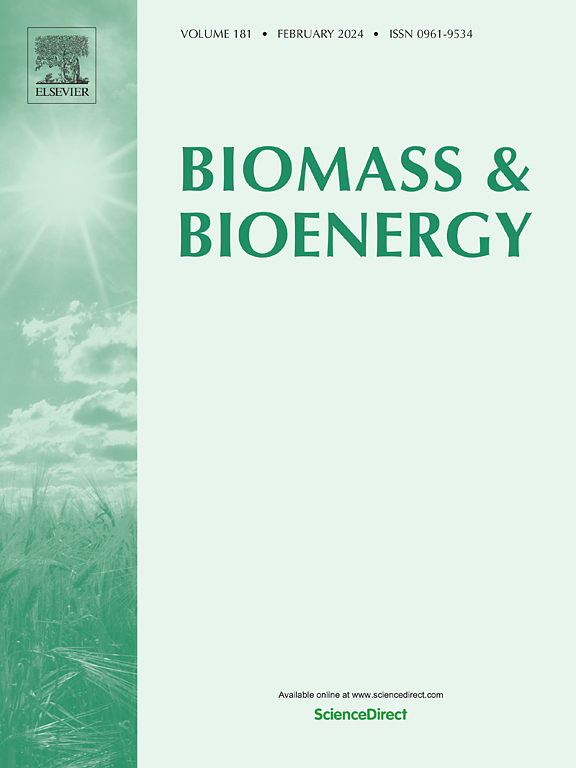呋喃喷气燃料 - 糠醛与环戊酮的无水醛醇缩合反应
IF 5.8
2区 生物学
Q1 AGRICULTURAL ENGINEERING
引用次数: 0
摘要
本文介绍了一种有别于传统化石燃料来源的无水大规模合成生物喷气燃料前体的方法。该方法涉及糠醛与环戊酮的醛醇缩合反应,生成的 C10-C15 燃料前体可进一步加氢脱氧生成高性能柴油和喷气燃料碳氢化合物。在工艺集成方面,醛醇缩合反应是在无水条件下进行的,利用过量糠醛作为溶剂。对各种商用催化剂的评估证实了在过量糠醛中运行的可行性。碱性和酸性催化剂都表现出显著的活性,其中氧化钙和无定形二氧化硅-氧化铝在 5 小时的反应过程中,环戊酮的转化率≥80 摩尔%,对所需燃料成分的选择性≥80 摩尔%。然而,一个被忽视的方面是明显形成了不需要的重副产物。观察结果表明,高浓度糠醛和使用强酸性催化剂是形成重副产物的主要原因。强碱催化剂 CaO 能显著减少这些低聚物的形成,但似乎并不能完全阻止其形成。有趣的是,水含量在副产物选择性方面似乎并没有起到主要作用。为了进一步抑制低聚物的形成,建议使用工艺自带的中间体作为溶剂。本文章由计算机程序翻译,如有差异,请以英文原文为准。
Furanic jet fuels – Water-free aldol condensation of furfural and cyclopentanone
A method for the water-free, large-scale synthesis of bio-jet fuel precursors, distinct from traditional fossil-based sources, is introduced. This approach involves the aldol condensation of furfural with cyclopentanone, producing C10-C15 fuel precursors eligible for further hydrodeoxygenation to high-performance diesel and jet fuel hydrocarbons. In the context of process integration, aldol condensation reactions were conducted under water-free conditions, utilizing excess furfural as the solvent. Evaluation of various commercial catalysts confirmed the feasibility of running in excess furfural. Both basic and acidic catalysts demonstrated significant activity, with CaO and amorphous silica-alumina achieving ≥80 mol% conversion of cyclopentanone and yielding ≥80 mol% selectivity towards the desired fuel components within 5 h of reaction. However, an overlooked aspect is the notable formation of undesired heavy side products. Observations indicated that the high furfural concentration, combined with the use of strong acidic catalysts, were the primary cause of heavy side product formation. The strong base catalyst, CaO, significantly reduced the formation of these oligomers, but did not appear to stop it completely. Interestingly, water content did not appear to play a major role in byproduct selectivity. To further suppress the formation of oligomers, the use of process-owned intermediates as solvents is proposed.
求助全文
通过发布文献求助,成功后即可免费获取论文全文。
去求助
来源期刊

Biomass & Bioenergy
工程技术-能源与燃料
CiteScore
11.50
自引率
3.30%
发文量
258
审稿时长
60 days
期刊介绍:
Biomass & Bioenergy is an international journal publishing original research papers and short communications, review articles and case studies on biological resources, chemical and biological processes, and biomass products for new renewable sources of energy and materials.
The scope of the journal extends to the environmental, management and economic aspects of biomass and bioenergy.
Key areas covered by the journal:
• Biomass: sources, energy crop production processes, genetic improvements, composition. Please note that research on these biomass subjects must be linked directly to bioenergy generation.
• Biological Residues: residues/rests from agricultural production, forestry and plantations (palm, sugar etc), processing industries, and municipal sources (MSW). Papers on the use of biomass residues through innovative processes/technological novelty and/or consideration of feedstock/system sustainability (or unsustainability) are welcomed. However waste treatment processes and pollution control or mitigation which are only tangentially related to bioenergy are not in the scope of the journal, as they are more suited to publications in the environmental arena. Papers that describe conventional waste streams (ie well described in existing literature) that do not empirically address ''new'' added value from the process are not suitable for submission to the journal.
• Bioenergy Processes: fermentations, thermochemical conversions, liquid and gaseous fuels, and petrochemical substitutes
• Bioenergy Utilization: direct combustion, gasification, electricity production, chemical processes, and by-product remediation
• Biomass and the Environment: carbon cycle, the net energy efficiency of bioenergy systems, assessment of sustainability, and biodiversity issues.
 求助内容:
求助内容: 应助结果提醒方式:
应助结果提醒方式:


